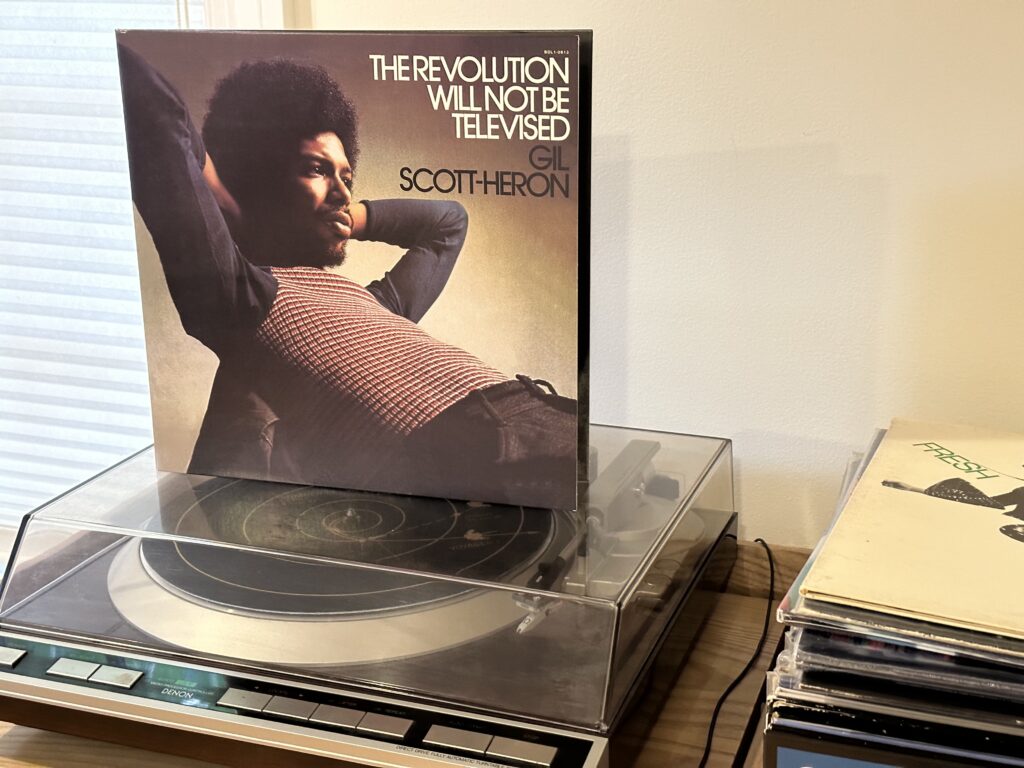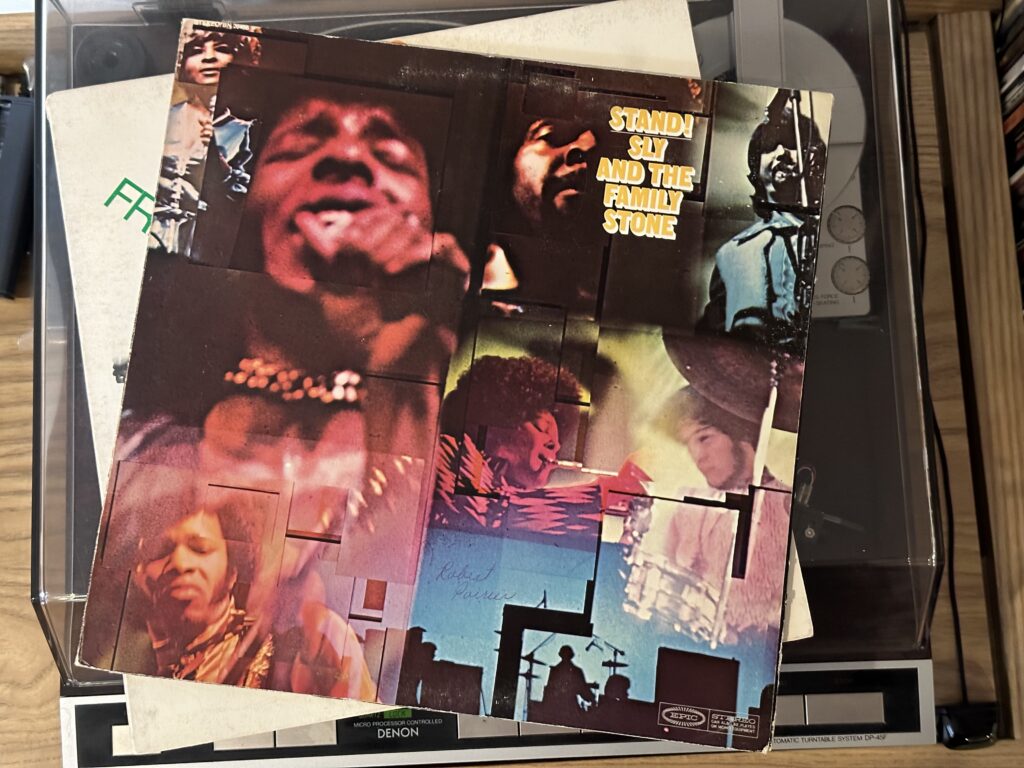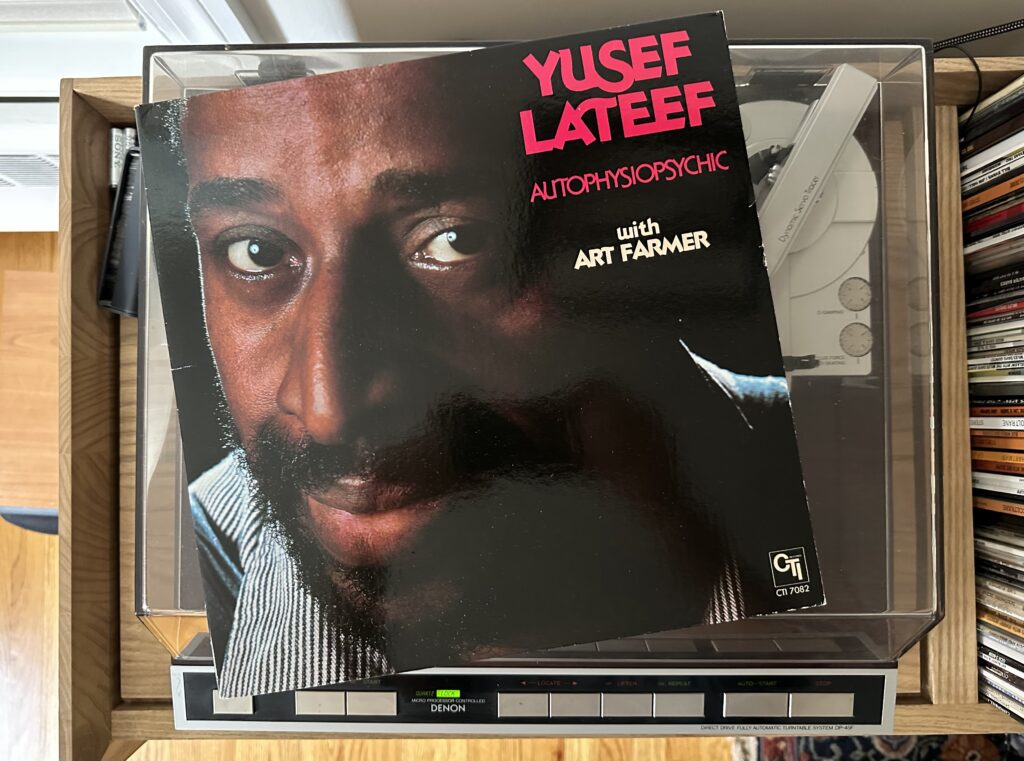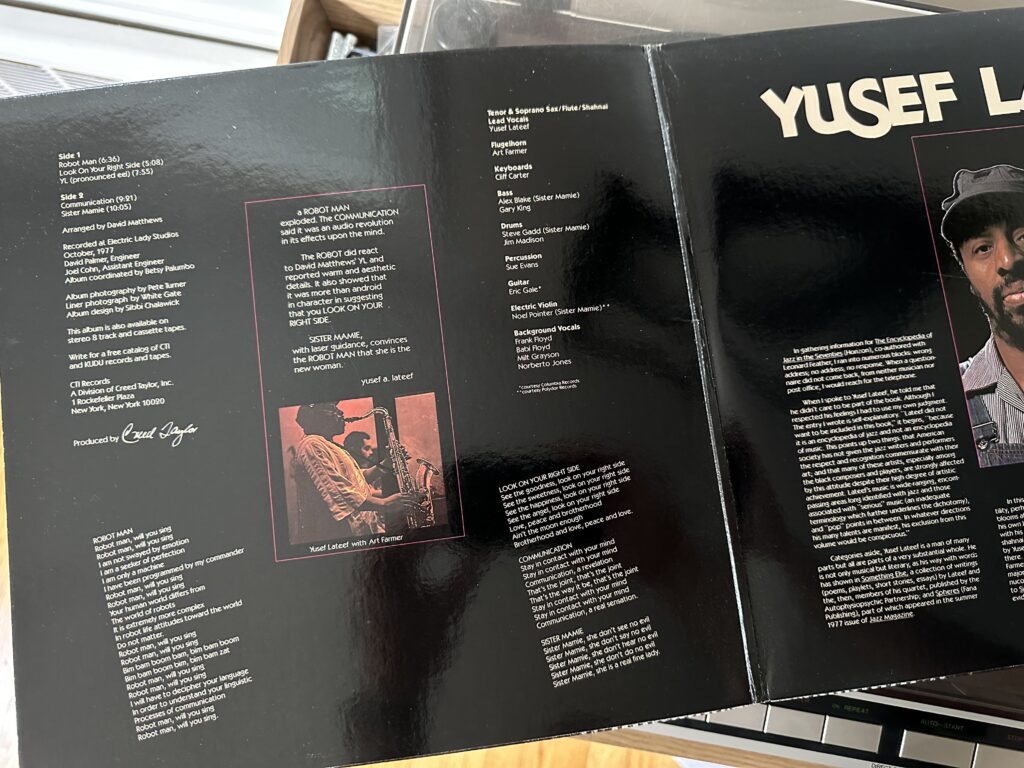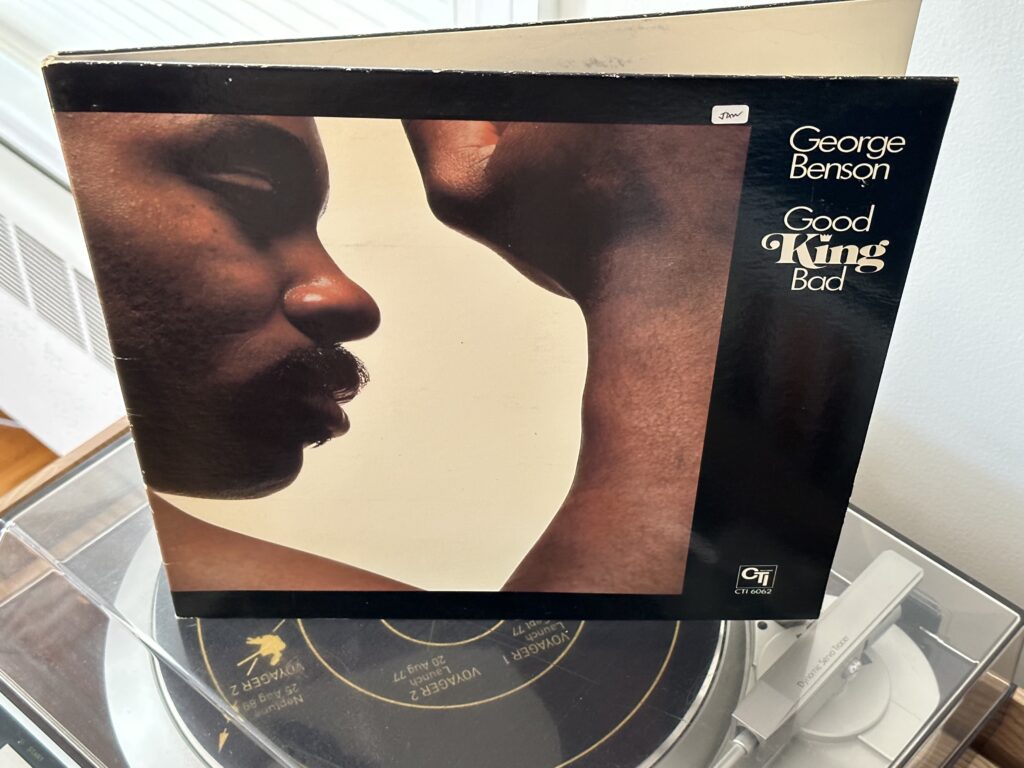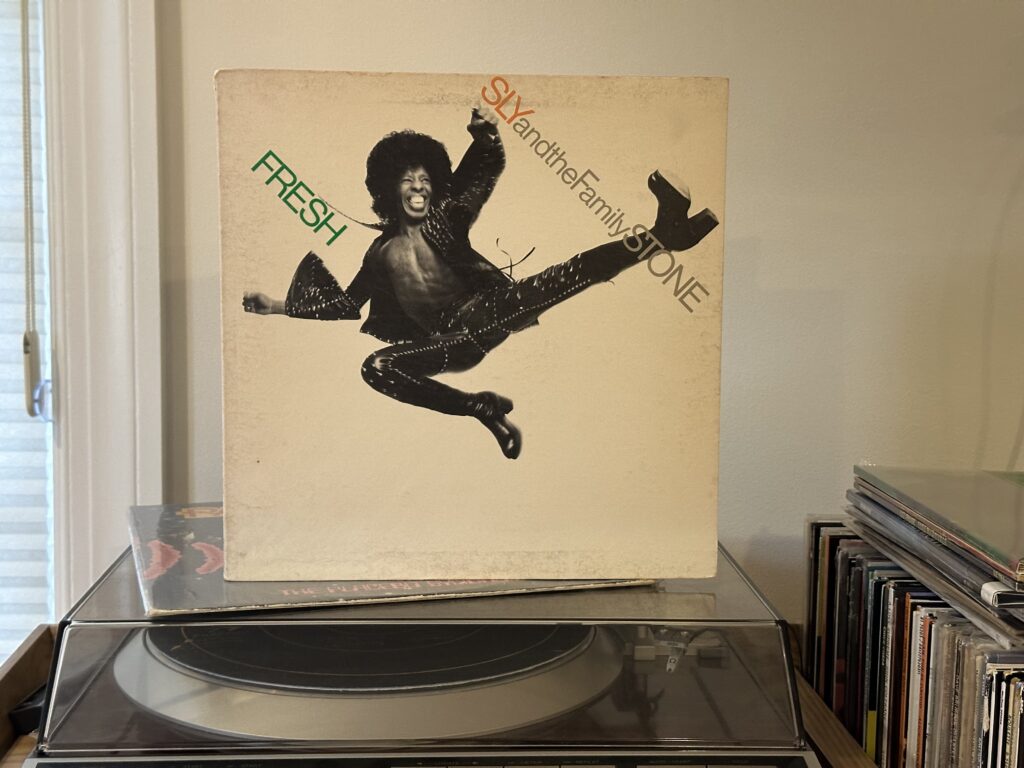
Album of the Week, September 30, 2023
I want to take a moment before I start this week’s Album of the Week to talk about Larry Graham, who is not on this album. But he was on the last Sly and the Family Stone album that I reviewed. I didn’t say a lot about him then, but as the first bass player for Sly and the Family Stone, the inventor of the slap bass technique, the founder of funk band Graham Central Station, a key collaborator with Prince in the 1990s (credited with introducing the Purple One to Jehovah’s Witnesses!)—his funk bona fides are without question. So when I say that somehow, this first album by Sly and the Family Stone to not feature Graham is even funkier than the ones that came before, it says something about the sheer amount of funk rolling around in Sly Stone’s being.
Sonically the record feels slightly more subdued than Stand!, perhaps because of the shift away from guitars to a more drum and bass driven sound. According to legend, Miles Davis made his band listen to the opening song, “In Time,” on repeat for over thirty minutes; it’s hard to know if this actually happened, but Stephen Davis’s contemporaneous review of the album in Rolling Stone talks about Miles’s admiration for Sly, and you can hear some of the influence in the best of the early 1970s fusion material that Miles cut (for instance, on the Champions compilation). “In Time” repays that kind of close listening; it’s got everything from a rocking opening (here driven by organ and brass rather than guitars) to an intricate interlocking rhythm line that has enough going on that it confused the Rolling Stone reviewer into thinking that it was in 3/5 time. But the song is solidly in funk territory; as George Clinton once proclaimed, “everything is on the one.”
“If You Want Me To Stay” is probably my favorite of Sly’s songs (though “Loose Booty,” from the follow up album Small Talk, is a superior funk jam). The simmering melody stays in a minor mode throughout, powered by a slinky bass line from Rusty Allen (or possibly Sly himself; it’s thought that he played all the instruments on this track). The lyrics are classic Sly word salad, but in the middle of it there’s the couplet “I’ll be good, I wish I could/get the message over to you now,” and there might not be a finer encapsulation of the “please take me back” archetype anywhere on record. It’s over in three minutes, but what a jam.
“Let Me Have It All” is an ominous groove on a similar theme, with Sly directly asking “You set up a barrier/Don’t you know I’d marry ya/Can’t explain how you make me feel/Don’t you know I’m feeling real.” The song never moves off its opening minor chord, and is in and out before you know it, again clocking in under three minutes. The mood lightens slightly for “Frisky,” but the lyrics, which celebrate his drug use, are bleak in retrospect, as his habit made him progressively more unreliable and ultimately cost him his band and career.
“Thankful ’n’ Thoughtful” lends an emotional core to the album. While powered by the same funk power, the track finds him singing his gratitude for being alive over that continuous groove. In what might be his only mention of his family on record, he reports “People got to be reminded where it’s really at/
Make your daddy happy and mama, your mama like it like that.” By contrast, “Skin I’m In” is a defiant statement that “if I could do it all over again/I’d be in the same skin I’m in.” The brief interlude contains one of the most complex harmonic chord progressions on the album, including a short bridge with a pulsating horn section that might be one of the great riffs in funk.
Side Two continues with “I Don’t Know (Satisfaction),” which might be a civil rights call to arms under the funk and Rolling Stones allusions. Sly’s lyrics feature a triple rhyme which lends punch to lines like “I see abuse, what’s the use/Time must let my people loose.” The song repeats the same groove over and over, building up to a crescendo before dropping to the fade out. “Keep on Dancin’” has a little more harmonic variety, opening with a downright threatening bass line before the backing vocalists sing the opening hook. The echo of the early Sly hit “Dance to the Music” lightens the track a bit, but there’s still the shadow of drug abuse lurking over the track with Sly saying “I’d get snowed in if I could.”
Perhaps the most unlikely track on the album is the band’s cover of “Qué Séra, Séra,” which begins as a more or less straight cover with Rose Stone singing the melody in a straight Doris Day voice. Then the chorus… the Family Stone take the tune to church, with Sly’s organ playing providing gospel notes under the family’s stacked harmonies.
“If It Were Left Up to Me” is in a completely different vocal space from the rest of the album, featuring lead vocals from Rose Stone and harmonies from Little Sister. It was apparently recorded in 1970 for an intended Little Sister album, but was shelved until the song surfaced on Fresh. The melody is a breath of fresh air, carrying some of the optimism of the earlier Sly and the Family Stone albums.
“Babies Makin’ Babies” is more in the pocket than the proceeding song, but still has some of the more ambitious harmonies and a great stacked-harmony chorus from Little Sister. Before I heard the track, I was convinced I was going to hear social commentary, but it turns out to be a funk chant with more word-salad lyrics. But what a funk chant! The groove is deep, folks.
Sly would record one more album, the aforementioned Small Talk, with the original Sly and the Family Stone, but his mental state had already begun deteriorating into paranoia and he started missing gigs. The band dissolved after booking Radio City Music Hall but only filling it to 1/8th capacity, having to scrape together money to make it back to Los Angeles. His subsequent career petered out by the mid-1980s. In 2010 he filed suit against his former manager, and was alleged to be homeless and living in a van in 2011. He is, apparently, still alive, and will release an autobiography this fall, but others have picked up the funk torch. We’ll hear from one of the most significant of those bands next week.
You can listen to today’s album here:

